Cal Poly Kitties: Students Keep the Cal Poly Cat Program Running with Social Distance, Communication and a Lot of Cleaning
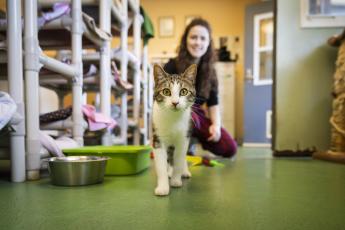
The Cal Poly Cat Program’s staff was gearing up for kitten season and the challenges of spring quarter when the coronavirus forced a lot of changes around mid-March.
The shelter staff, comprised mostly of Cal Poly students, moved quickly to figure out what to do — even as they balanced final exams and the day-to-day challenges of running a shelter.
“A lot of it is just adapting and improvising,” said animal science student Ali Chavez, the shelter’s co-manager. “We’ve had to be very flexible and live day-to-day, moment-to-moment, especially at the beginning, when things were so uncertain.”
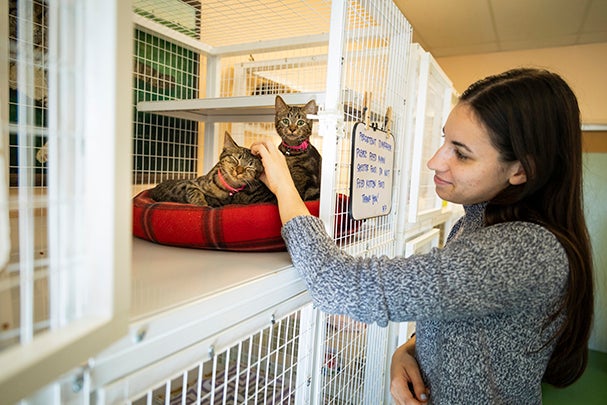
The shelter is small, and many volunteers are older, so the team had to figure out the best way to take care of the cats while protecting their volunteers, and try to stay on top of a rapidly-evolving situation.
“It’s been a learning curve. We’ve all had to rely a lot on each other and good communication,” said animal science student Samantha Cvetovac, the shelter’s co-manager. “We definitely have a good team.”
The staff, including Cvetovac and Chavez, as well as social media coordinator Andrea Brkic, volunteer trainer Lauren Hare and adoptions coordinator Alexis Leviner — all students —described the first few weeks of the pandemic as a stressful time, as they wondered how things would shake out in their personal lives as well as with the shelter.
“We have the responsibility of the cats in our care and realistically, closing the shelter is not an option,” Chavez said. “We still needed some volunteers to come in and help with cleaning — our volunteer staff keeps us going. It was a high-stress, high-anxiety time.”
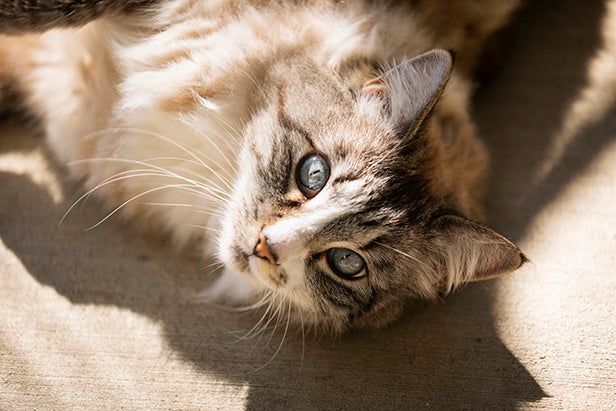
The shelter has received an outpouring of support from the community, including an increase in people wanting to volunteer, Hare said.
“There were people emailing me, saying ‘I heard you need people,” Hare said. “it was surprising but really nice that everyone wanted to help out.”
Brkic said she’s seen an increase in emails from people looking to adopt or foster, or asking if they can volunteer.
Shelter staff had to figure out a schedule for volunteers, limiting the number of people who can be in the shelter to three at a time, out of respect for social distancing guidelines.
“If people are signed up for a volunteer shift, we can’t just drop in to check on the cats,” Cvetovac said.
The shelter’s volunteers and fans have also helped the staff make masks, so staff can keep volunteers as safe as possible inside the shelter.
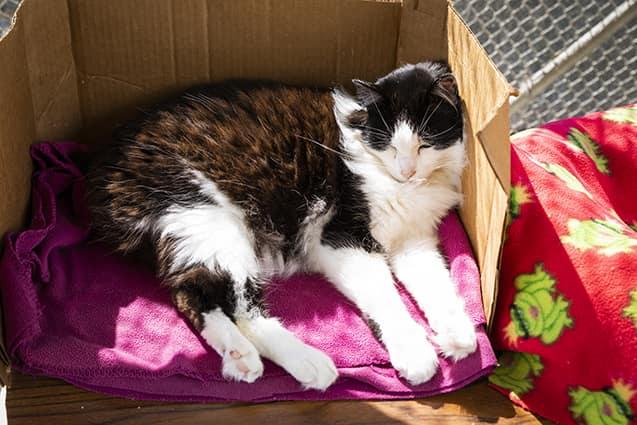
The team has also changed the way that they clean and accept new cats to keep up with health guidelines. In order to keep up with demand for cleaning supplies, as well as other items for the cats, the shelter, a nonprofit, is asking for donations through their Amazon wish list.
The increase in people staying at home due to the pandemic has led to more adoptions and fosters as well, the team said. They’ve had to figure out how to conduct adoptions and foster out cats in the new, socially distanced environment.
People who are interested in adopting now go through virtual screenings and fill out paperwork virtually to limit the number of in-person meetings, Leviner said. And the shelter is completely closed to visitors.
Chavez also started trainings this quarter for people looking to foster neonatal kittens, or kittens under 8 weeks of age, which require more care and training than an older kitten.
While she had originally designed the trainings before COVID-19 hit, she’s adapted them into virtual trainings, which she holds twice a week and which have been well-attended.
“In the animal rescue side of things, you see a lot of the bad side of humans,” Chavez said. “When things like this happen, it reminds you that there are good people out there.”
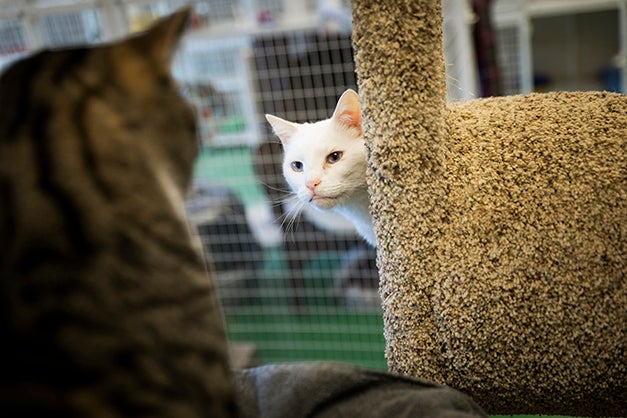
As of mid-April, the shelter had a 40-person waiting list for kitten fosters. There were just over 20 cats physically in the shelter, and another 10 to 15 cats in foster homes, Cvetovac said. Usually, there are about 30 to 40 cats in the shelter and 10 in foster homes.
“We Learn by Doing almost every single day,” Leviner said. “We talk about what we’ve been doing, what we can do better and we try to improve where we can.”
To learn more about the Cal Poly Cat Program, visit their website, https://catprogram.calpoly.edu/, find them on Instagram at @calpoly_catprogram or their Facebook page at facebook.com/CalPolyCatProgram.
Editor's note: All photographs were taken in early March.




